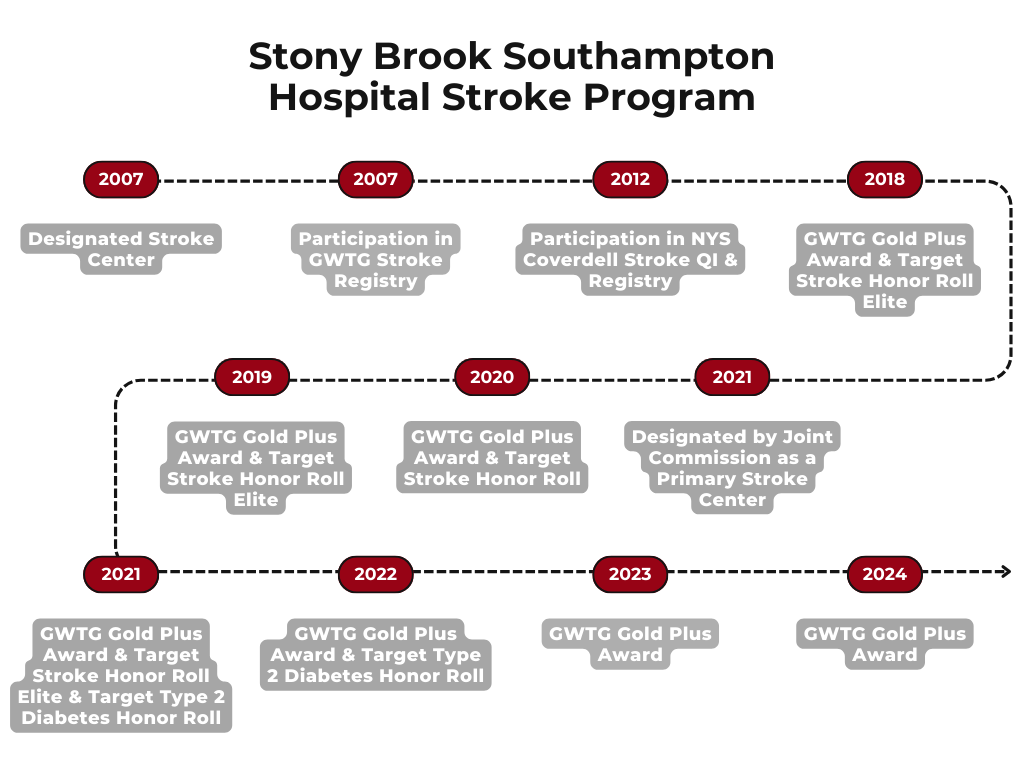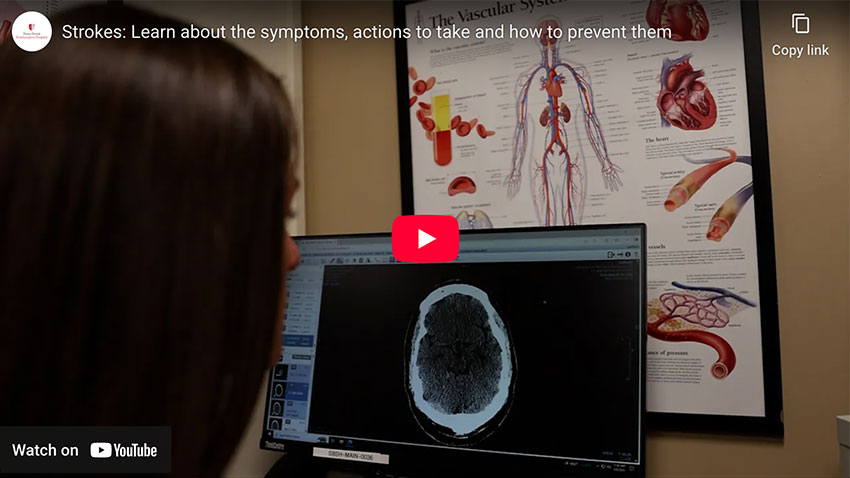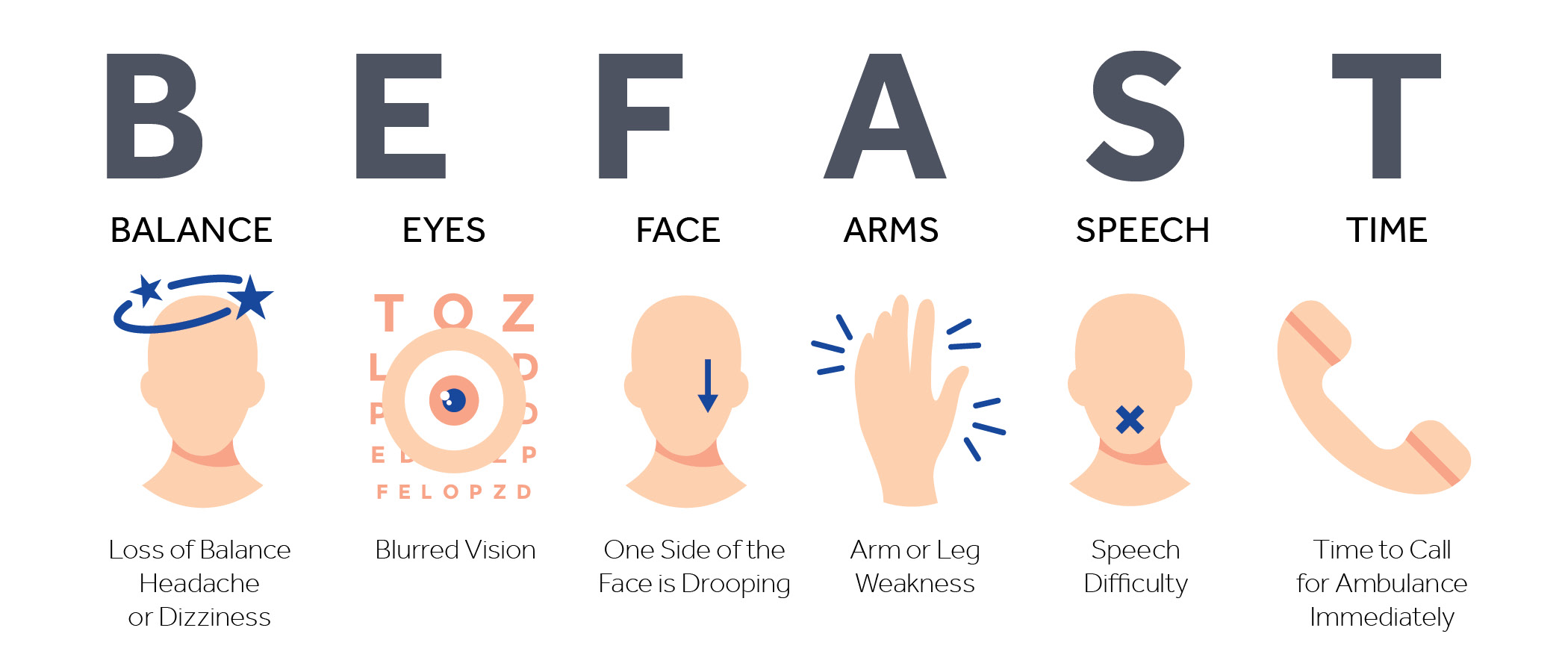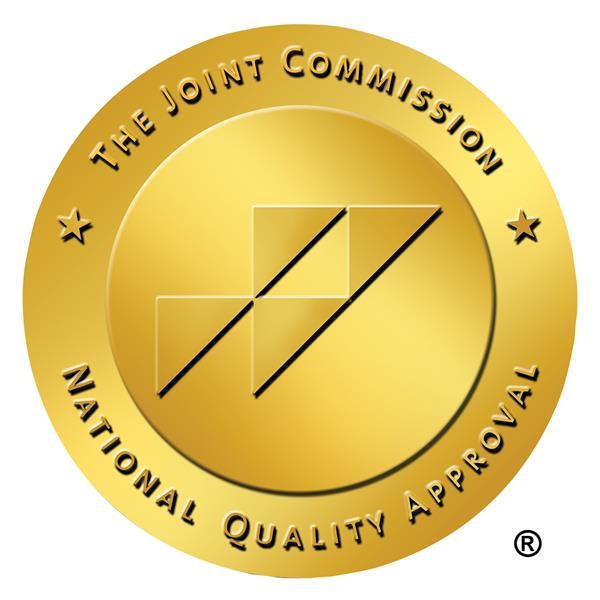Learn about strokes, their symptoms, actions to take and prevention
As a designated primary stroke center, The Audrey and Martin Gruss Heart & Stroke Center provides sophisticated diagnostic and treatment capabilities. For twelve years in a row, Stony Brook Southampton Hospital’s Heart & Stroke Center has been recognized by the American Heart Association (AHA) and The American Stroke Association’s, "Get with the Guidelines" program for applying the most up-to-date evidence-based treatment guidelines to improve patient care and outcomes in our East End community. In 2025, we received the Get With The Guidelines®-Stroke Gold Plus with Target: Stroke Honor Roll Elite with Target: Type 2 Diabetes Honor Roll. This achievement brings national attention to our Stroke Center for enhancing patient care with evidence-based guidelines.


What We Offer
- An advanced endovascular surgical suite featuring the latest imaging technology in a sterile operating room environment.
- A second operating room with a Siemens Healthcare Artis zeego angiography system offering unprecedented flexibility.
- Advanced technology to ensure minimally invasive techniques when performing procedures including cardiac catheterizations and interventions, such as pacemaker, loop recorder, and defibrillator implantation.
Patients requiring more advanced treatments are treated at Stony Brook University Hospital, the first hospital in Suffolk County to achieve Comprehensive Stroke Center (CSC) certification by The Joint Commission. Click here to learn more.
Important Information About Stroke

Five Warning Signs of Stroke:
- Sudden onset of weakness or numbness on one side of the body.
- Sudden speech difficulty or confusion.
- Sudden difficulty seeing in one or both eyes.
- Sudden onset of dizziness, trouble walking or loss of balance.
- Sudden, severe headache with no known cause.
What To Do When Someone Is Having a Stroke
- Call 911 immediately
- Note the time you first see symptoms
- Perform CPR, if necessary
What Not To Do When Someone Is Having a Stroke
- Do not let that person go to sleep or talk you out of calling 911
- Do not give them medication, food, or drinks
- Do not drive yourself or someone else to the emergency room, call 911
Español

Learn how to spot a stroke R.Á.P.I.D.O:
✓ R - Rostro caído (Face drooping)
✓ A - Álteración del equilibrio (Loss of balance, or lack of coordination)
✓ P - Pérdida de fuerza en el brazo (Arm weakness)
✓ I - Impedimento visual repentino (Sudden vision difficulty)
✓ D - Dificultad para hablar (Slurred or strange speech)
✓ O - Obtén ayuda, llama al 911 (Get help, call 911)
Las cinco señales un accidente cerebrovascular son:
- Comienzo repentino de debilidad o entumecimiento en un lado del cuerpo.
- Dificultad o confusión repentina para hablar.
- Dificultad repentina para ver con uno o ambos ojos.
- Comienzo repentino de mareos, dificultad para caminar o pérdida del equilibrio.
- Dolor de cabeza severo y repentino sin causa conocida.
Que hacer cuando alguien está sufriendo un derrame cerebral:
- Llame al 911 de inmediato
- Anote la hora en que ve los síntomas por primera vez
- Realice RCP, si es necesario
Qué no hacer cuando alguien está sufriendo un derrame cerebral:
- No permita que esa persona se duerma ni le disuada de llamar al 911
- No les dé medicamentos, alimentos ni bebidas.
- No conduzca usted ni nadie más a la sala de emergencias, llame al 911



